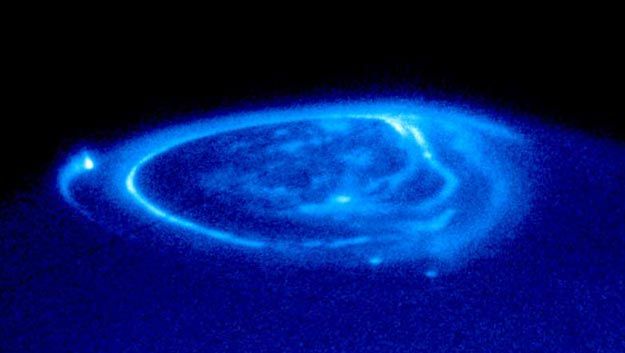A Close-Up of Aurora on Jupiter
Jupiter has
aurorae.
Like Earth, the
magnetic field of the gas giant funnels
charged particles released from the Sun
onto the poles.
As these particles strike the atmosphere,
electrons are temporarily knocked away from existing gas
molecules.
Electric force attracts these electrons back.
As the
electrons recombine to remake neutral molecules,
auroral light is emitted.
In the
above recently released photograph by the
Hubble Space Telescope taken in
ultraviolet light, the
aurorae
appear as annular sheets around the pole.
Unlike
Earth's aurorae,
Jupiter's aurorae include
several bright streaks and dots.
These marks are caused by magnetic flux tubes connecting
Jupiter to its
largest moons.
Specifically,
Io
caused the bright streak on the far left,
Ganymede
caused the bright dot below center, and
Europa caused the dot to its right.





